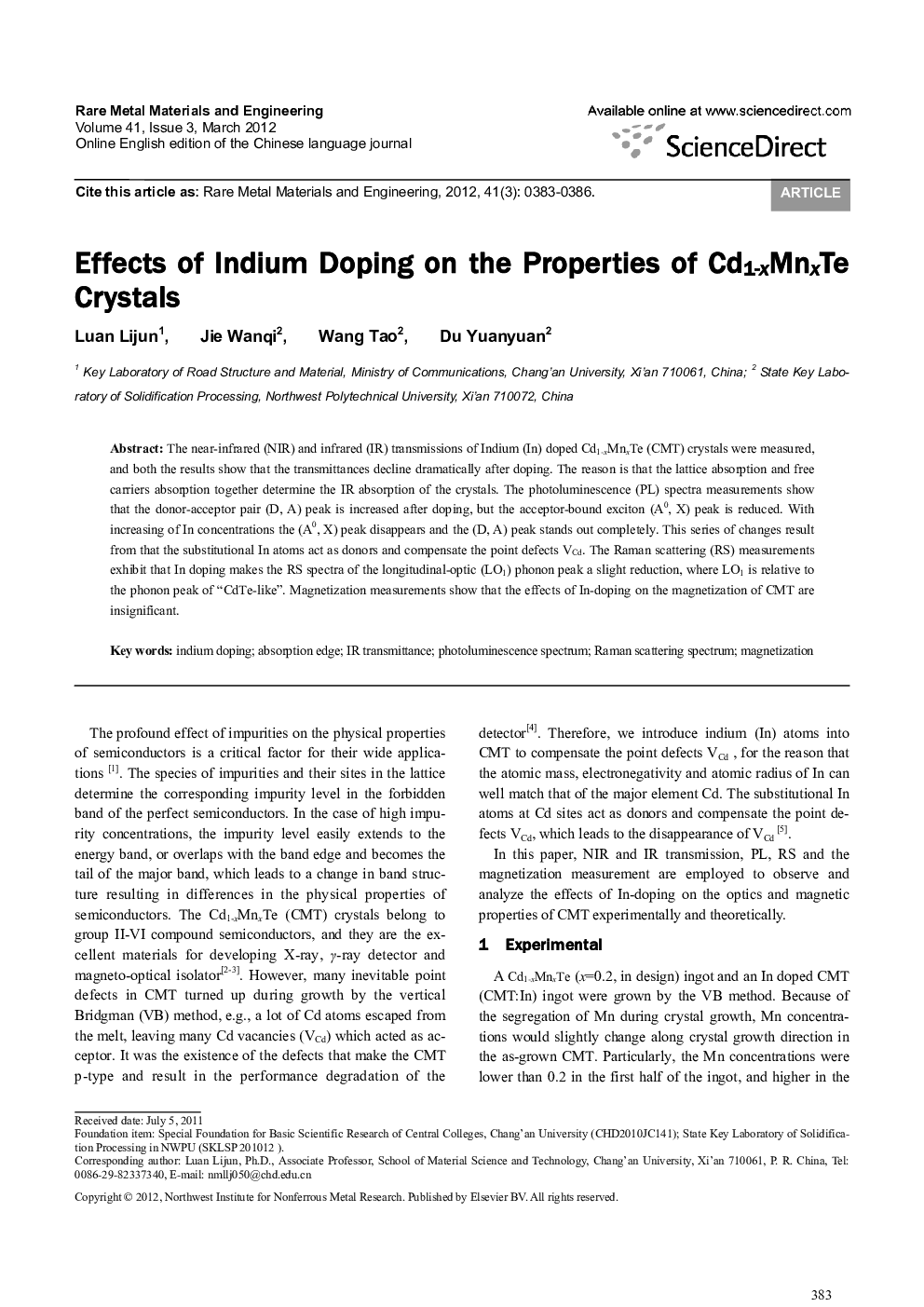| Article ID | Journal | Published Year | Pages | File Type |
|---|---|---|---|---|
| 815308 | Rare Metal Materials and Engineering | 2012 | 4 Pages |
The near-infrared (NIR) and infrared (IR) transmissions of Indium (In) doped Cd1-xMnxTe (CMT) crystals were measured, and both the results show that the transmittances decline dramatically after doping. The reason is that the lattice absorption and free carriers absorption together determine the IR absorption of the crystals. The photoluminescence (PL) spectra measurements show that the donor-acceptor pair (D, A) peak is increased after doping, but the acceptor-bound exciton (A0, X) peak is reduced. With increasing of In concentrations the (A0, X) peak disappears and the (D, A) peak stands out completely. This series of changes result from that the substitutional In atoms act as donors and compensate the point defects VCd. The Raman scattering (RS) measurements exhibit that In doping makes the RS spectra of the longitudinal-optic (LO1) phonon peak a slight reduction, where LO1 is relative to the phonon peak of “CdTe-like”. Magnetization measurements show that the effects of In-doping on the magnetization of CMT are insignificant.
